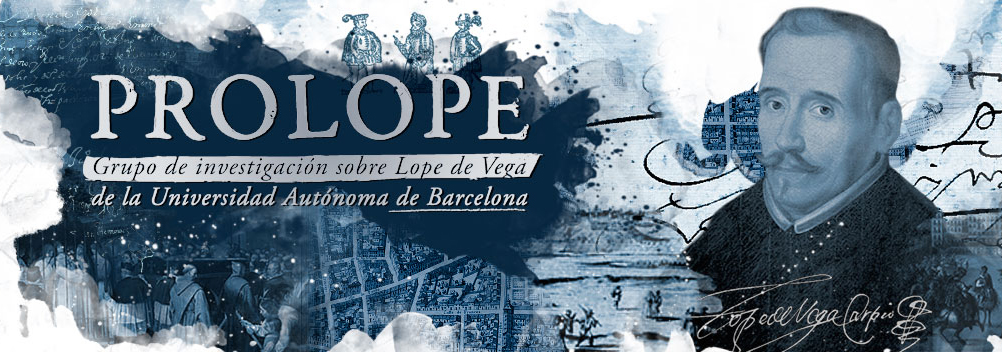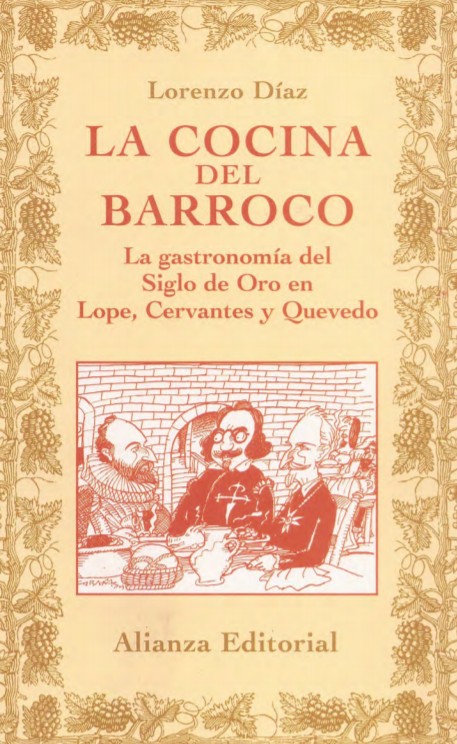Biography
Lope de Vega, one of the most important writers in the history of Spanish literature, was a rogue and a womanizer, a loving father and a devout priest, an inquisitor and a poet. Applauded and admired in his time –in which they called him the Fénix de los Ingenios(Phoenix of Wits)— he wrote more than a thousand works, lived to the age of 73, and took part in a memorable quarrel with Miguel de Cervantes, who is, nevertheless, responsible for one of Lope’s best known nicknames today, Monstruo de la Naturaleza (Freak of Nature).
Son of Francisca Fernández Flórez and Félix de Vega Carpio, a couple from the Cantabrian mountains, Lope Félix de Vega Carpio was born on November 25 (some believe it was December 2), 1562. He came into the world shortly after Cervantes, Góngora, Mateo Alemán and Vicente Espinel. And with them one of the greatest literary groups of all times was born.
Brother to Francisco, Juliana, Luisa and Juan (according to the Archive of San Sebastián, he had two more sisters: Catalina and Isabel), he spent part of his childhood with his uncle Miguel de Carpio, Inquisitor of Seville, but began his studies in Madrid, in the Imperial School, when he was ten years old. He was already quite precocious by then, a child prodigy who read in Spanish and Latin, translated from Latin and wrote plays. El verdadero amante and La pastoral de Jacinto were writing during that time.
When he was fifteen, he left school and entered the University of Alcalá de Henares to study. And a year later, upon the death of his father, he showed one of the first signs of his mischievous and adventurous side by running away from home with his friend Hernando Muñoz. After finishing his studies in Alcalá, he traveled to Salamanca to continue his education, although nobody has been able to document this fact.
Later, following his desire to continue learning, he broadened his knowledge by studying Mathematics and Astrology with Juan Bautista Labaña, Phillip II’s chief cosmographer, and liberal arts with Juan de Córdoba. Lope was not only a good student, but he had an endless curiosity for for knowledge. Up until the day he died he continued to read and research in many different fields and areas. (source http://www.casamuseolopedevega.org)
Biografía
Lope de Vega es uno de los escritores más importantes de la historia de la literatura española. De vida polémica, muchas veces alejado de las normas y la moralidad del momento, fue un amante padre y un devoto sacerdote, inquisidor y poeta. Aplaudido y admirado ya en su época –en que se le llamaba popularmente ‘Fénix de los Ingenios’–, escribió más de mil obras, vivió 73 años y protagonizó una memorable pelea con Miguel de Cervantes, responsable, sin embargo, de uno de los sobrenombres por los que el mundo entero le conoce hoy, ‘Monstruo de la Naturaleza’.
Hijo de Francisca Fernández Flórez y de Félix de Vega Carpio, una pareja de montañeses cántabros, Lope Félix de Vega Carpio nació en Madrid el 25 de noviembre (algunos creen que fue el 2 de diciembre) de 1562. Vino al mundo poco después de que lo hicieran Cervantes, Góngora, Mateo Alemán y Vicente Espinel. Y con ellos brotó una de las más grandes cosechas literarias de todos los tiempos. Hermano de Francisco, Juliana, Luisa y Juan (según el Archivo de San Sebastián tuvo dos hermanas más: Catalina e Isabel), pasó parte de su infancia con su tío Don Miguel de Carpio, inquisidor de Sevilla, pero comenzó sus estudios en Madrid, en el Colegio Imperial, cuando cumplió diez años. Ya era entonces bastante precoz, un niño prodigio que leía castellano y latín, traducía de éste segundo y escribía comedias. A esa época corresponden El verdadero amante y La pastoral de Jacinto.
Con quince años abandonó el colegio e ingresó en la Universidad de Alcalá de Henares para cursar el bachillerato. Y un año más tarde, a la muerte de su padre, mostró uno de los primeros síntomas de su faceta de bribón y aventurero al huir de casa con su amigo Hernando Muñoz. Al parecer, tras finalizar sus estudios en Alcalá, viajó a Salamanca para seguir su formación, aunque nadie aún ha podido documentar este dato.
Tiempo después, en su afán por aprender siempre, amplió sus conocimientos estudiando Matemáticas y Astrología con Juan Bautista Labaña, cosmógrafo mayor de Felipe II, y Artes liberales con Juan de Córdoba. Lo cierto es que Lope no solo fue un buen estudiante, sino que, además, no abandonó jamás la curiosidad por el saber y hasta el día de su muerte siguió leyendo e investigando en campos de muy diferentes materias. (source http://www.casamuseolopedevega.org)
http://www.cervantesvirtual.com/
Click on the pick to the left and in the search put Lope de Vega!
https://emothe.uv.es/biblioteca/
Sonetos
http://www.rinconcastellano.com/biblio/barroco/lope_sonetos.html




